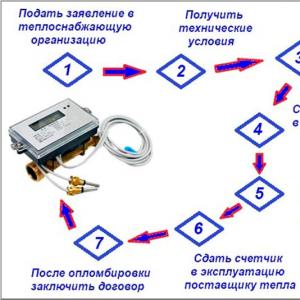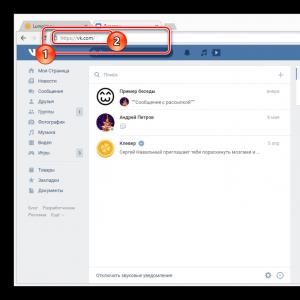Equipment for the production of panels for frame houses. How to choose equipment for the production of frame houses. Frame houses from the manufacturer
If we start from a large one, that is, from a low-rise building as a whole, there are certain prospects here. Returning to state programs, we note that in 2012 a decree came into force on the start of a program to provide residents of Russia with affordable housing for a period up to 2020, which also mentions measures to develop low-rise buildings.
The program was updated in 2014. You can familiarize yourself with it in more detail. But we note one important detail for our question - not a word is said about frame houses in the program. Although it is this type of houses, like no other, that corresponds to the tasks set to promote the introduction of new modern, energy-efficient and resource-saving technologies in housing construction and the achievement of one of the key goals - to increase the affordability of housing for the population.
Obviously, such a situation should be understood as follows: the structural design of a frame house conflicts with another important provision of the law - improving the quality of housing provision for the population. And this is directly related to the shortcomings of frame houses:
- Relative fragility. If the frame itself is relatively reliable with proper design, then modern heaters are not. Their service life is about 30 years.
- Extreme fire hazard. The design of the house is such that the frame house burns like a match instantly. Most likely, the fire brigade simply will not have time to save the property of the owners.
- Rotting. If the price is “optimized” by low-quality timber, the frame is unlikely to last long.
- Poor sound insulation in comparison with bricks, timber and even blocks.
- Low environmental friendliness. Synthetic materials are used as insulation, which do not increase the popularity of this type of houses.
And you need to know about this because these are the most common objections of your potential customers. And they have to fight.
Subtleties of opening
Before you open, you should decide on the direction of activity. There are at least three of them:
- Production of frame houses. You will need to open an LLC, rent a production facility and arrange it in accordance with the standards of SNiP, PUE. It will also require the purchase of production equipment, the hiring of a significant number of personnel.
- Construction of frame houses. This option is much easier in terms of launch. The task of such an organization is to establish contacts with manufacturers of frame house sets, organize the receipt of orders for the construction of frame houses, draw up and coordinate construction documentation. And, ultimately, to assemble the kit at the customer's site.
- Full cycle organization. This form of doing business combines the first and second options in one.
The choice depends on experience in this field. Contrary to ideas, frame construction is extremely difficult in terms of construction. In order for the design to be reliable and durable, considerable professionalism is required. Just unprofessional teams are one of the key reasons for the low popularity of this area of low-rise construction among consumers.
Therefore, the ascent of a successful entrepreneur in this area is seen in this order:
- Work as an ordinary employee in an already existing organization. Studying the nuances of construction.
- Creation of our own construction team for the creation of prefabricated houses.
- Organization of a workshop for the creation of house kits and reaching the level of a full-cycle company.
The loss of any of these stages can negatively affect the quality of your work, and, accordingly, your popularity with customers.
Creation of production
How to organize a construction team is perhaps not the issue that deserves full coverage in this material. It is clear that at least two or three in the team must have solid experience in building frame houses. If you plan to be both an organizer and a foreman at the same time, you should be one of those people. Another 1-2 people can be hired without experience to perform ancillary work.
The creation of production is a more complex idea, so we will dwell on it in more detail.
room
For the production of house kits, a large room is required: at least 500 sq. m. The easiest way is to rent a ready-made house-building plant with equipment, if there is such an opportunity in your region. Yes, it is less profitable in the long term, but it will save money when you open it.
Otherwise, consider the following factors:
- To save money, choose a place away from the city.
- Not all regions have their own workshops, so give preference to regions with less competition.
- Proceed from the target audience: the region should have a developed private sector (this is your main consumer) with an average income level.
- The workshop must be supplied with electricity and water.
- Pay attention to the entrance: heavy vehicles should easily turn around in the loading / unloading area.
Equipment
Please note that there are several technologies for the production of frame houses. The most common in Russia are Finnish and Canadian. Study the special literature about their advantages and disadvantages in advance, because the purchase of equipment depends on it. May be required:
- Format cutting machine.
- Sheet edge processing machine.
- Press for splicing timber.
- Automatic saw.
- Assembly complex.
- Truss assembly equipment.
- Equipment for the assembly of beams.
- Docking press.
- Tenoning machine.
This is just the basic equipment. Add cargo here (hand trucks, loaders, hoists), racks, wall panel stores and rafters.
In addition, do not forget about a computer with software for creating projects such as Autocad, 3D Max (respectively, and about the employee who will work with this).
Selling companies do not disclose equipment prices. You can get full information about them upon request. But already by the number of technical means it is clear that the equipment of the workshop will have to be spent thoroughly.
Sales and payback
The costs of the construction team for the launch are minimal and they can be “recaptured” in one completed order. Of the regular expenses, only advertising can be: "outdoor advertising" in the private sector and cottage villages, printed in local newspapers with ads, the creation of a website and its promotion.
When organizing production, it is worth considering this point more seriously. It is necessary to take into account the seasonal factor of the business. The main sales are carried out from spring to the end of summer. The off season starts in autumn. Calculate how many house kits you need to sell per season so that the company pays off in no more than 3-4 years.
A rather high margin on the house kit will come to the rescue. The average cost starts from 7 thousand rubles per sq. m. m. That is, a house of 100 square meters. m costs, according to a rough estimate, 700 thousand rubles. The finished house kit will cost about 1.4-1.5 million for the consumer. Excluding taxes and other expenses, each house kit will bring the organization at least 500 thousand rubles.
Moreover, the advantage of the position of the manufacturer is that there are few creators of house kits, and there are many construction teams. Finding 5-6 teams of builders and getting orders from them is not so difficult. Alternatively, you can create your own retail line. The house kit is sold with detailed assembly instructions, so some buyers take on the assembly themselves. Especially when it comes to a country house, the requirements for which are less.
Eventually
The sphere of construction can be considered a conditionally promising undertaking. The main advantages are the low cost of producing a house kit and a high margin. The main disadvantage is the predominantly negative attitude towards such buildings in society. If in Canada and the USA more than 70% of the low-rise housing stock is made up of frame houses, in our country their share hardly exceeds 5-10% (unfortunately, there are no exact statistics).
You will have to focus only on summer residents or take on the difficult mission of changing public opinion. But for this you will have to try very hard and pay great attention to quality. However, doing your job right is a condition for any company in any industry.
- Quality and durability. Mounting. Prepared elements of the future house are brought to the construction site and assembled in accordance with the project documentation.
- Energy efficiency. Allows you to save more than 30% on heating the house from panels. Buildings can be designed for climatic conditions up to -65 ˚С. According to SNiP II-3-79 "Construction Heat Engineering", the resistance to heat transfer of walls should be, for example, in the Nizhny Novgorod region at least 3.3 m2xg.C / W. The heat transfer resistance of our walls is 4.3 m2xg.C/W, which is 30% more than required.
- Fast construction at any time of the year. The production of frame-panel houses provides a 90% degree of factory readiness, reducing the period of installation of a house from panels to several days, and the total construction and turnkey finishing time to several weeks. All components of the house (wall and floor panels, roofing elements) are produced in a closed workshop, at a constant temperature and humidity, and are delivered to the construction site packed in protective films. A team of professionals can only assemble the house kit, firmly strengthening the panels between themselves and on the foundation. None of the finished panels require any modification during installation. “Wet” construction processes, inevitable during most construction methods, are completely excluded in panel-frame technology, therefore the construction of a panel-frame house without the slightest loss of quality on a pre-prepared foundation is possible at any time of the year, even at sub-zero temperatures. The smooth surface of the walls also simplifies and reduces the cost of interior and exterior finishing of the house from turnkey panels.
- architectural diversity. Panel-frame technology allows you to implement a wide variety of architectural and planning solutions. A classic, compact and functional European house, a solid modern cottage in a rustic style, an exquisite country villa or a stylized noble estate - all this may well be a comfortable and reliable panel-frame house.
- Environmental friendliness. The wood of the frame is treated with antiseptics that exclude rotting. Cement particle boards are free from chemicals, adhesives and formaldehyde resins. The plates are vapor-permeable and your house "breathes" thanks to this.
- Noise isolation. The airborne sound insulation index reaches 62 dB, which is 12 dB more than the norm.
- Fire safety. Our wall panels have the third degree of fire resistance.
Panel-frame houses according to German technology
The plant for the production of frame-panel houses is located in the Nizhny Novgorod region.
Unlike other prefabricated wooden frame technologies (“Canadian” modular), the German panel-frame technology provides for high-tech production.
The production of houses is organized in such a way that the components of a low-rise building (walls, ceilings and other elements) are assembled not by workers at the construction site, but in factory workshops using modern automated equipment controlled by computer programs.
Only such production can guarantee a 2-3-day period for the construction of a comfortable, reliable and high-quality house (without finishing).
The essence of the technology is the construction of a house based on a frame made of jointed timber. The frame inside is filled with modern eco-friendly and energy-efficient insulation. From the side of the room, the frame is closed with a vapor barrier film and a 2-layer inner lining - GSP and GKL. From the outside, a gypsum chipboard is installed, hydrophobized with moisture-repellent impregnations.
There are 2 options for exterior finishes:
1) plaster facade- finishing with mineral plaster and
2) ventilated facade- for finishing with various hinged facade materials at the request of the customer.
Panel-frame construction remains one of the most popular solutions for permanent residences. This is one of the most inexpensive technologies suitable for capital energy-saving construction.
Today it is one of the most demanded technologies for the construction of low-rise buildings in the world. In Russia, it has become popular not only among private developers: in most regions, for the implementation of national housing programs, it is precisely panel-frame houses that are being built - they are optimal in terms of price, quality, construction time and service life.
Today, such an entrepreneurial business as the production of frame houses is beginning to enjoy particular popularity. And in order to organize your company in this field of activity, you will need to purchase all the necessary equipment. In this review, we will highlight what equipment you need to purchase to start production.
Purchase of a minimum set of installations
So, what equipment for the production of frame houses may be required? An example should be given of a production line with a minimum number of installations. Need to buy:
- Panel assembly line that works with material up to 10 meters long.
- A machine that may be required to assemble window packages.
- Lift, through the use of which it is possible to deliver window packages to the required place.
- The machine with which the wood will be processed. You will also need such equipment for the production of frame houses as a conveyor.
- It is necessary to purchase a device for cutting plates.
- You will need a rack for insulation rolls.
- A hoist is needed to lift the slabs.
- To clean the premises, you will need to purchase a sawdust removal system.
- You will need an air compressor and pipeline.
- Knocking tools required.
Equipment purchase costs

When purchasing all the necessary equipment for the production of frame houses, it will be necessary to agree with the supplier on the installation supervision of the equipment and on training the personnel to work with the installations. This may require about 600 thousand rubles. To purchase a production line, an entrepreneur may need about 12 million rubles.
What can you say about the materials used?
The technology of frame houses includes the use of raw materials such as sawn pine or spruce boards. Plate material or panel board can also be used. You will need to use heaters. As such a material, slab thermal insulation is usually used, which is characterized by fire-resistant qualification.
You need to think about waterproofing. As a material in this situation, ordinary building polyethylene is used. Fastening is provided by brackets.
Additional nuances

When purchasing equipment for the production of frame houses, you should think about purchasing a forklift. With it, the slab material will be moved to the place of assembly of the structure. So, you should consider in more detail some of the main positions of the equipment.
Using an edger
Due to the installation of this type, it is possible to cut the lumber for the construction of the frame into separate parts of a certain size. The machine has a pneumatic feed and exactly the same clamps. In order for the specialist working with the installation not to suffer, technology such as dual buttons is used. In order for machines for the production of frame houses of this type to start working, you must simultaneously press the start button with both hands. The working area is protected by using a special casing. So that trimming does not interfere with work, a special slope was invented.
Application of the radial saw machine
Through the use of such an installation, it is possible to cut the material at a certain angle. This happens due to the control of a special frame. The saw unit moves on ball bearings.
The machine with which mineral wool is processed

When calculating frame houses, it is necessary to remember about the use of heat-insulating material. To process it, you need to use a band saw machine. It is equipped with a special casing, which rises through the use of manual type flywheels. The lower disc is equipped with special brushes for cleaning.
Cleaning the workplace from debris
In order to get rid of traces of sawdust, you must use a special pump. You can also buy a processing machine that removes debris through a special pipeline. Such equipment usually has fire protection in its composition - special dampers that are located in the return channel. In the event that the temperature is raised to 55 degrees, the fuse will work. It will close the damper and turn off the voltage.
Using an air compressor
Due to the installation, it is possible to provide a technological line with compressed air, which consists of a piston pneumatic compressor. A pipeline is also connected to an installation of this type. It also goes to work machines.
Using the nailing tools
The production line must necessarily be equipped with a hand tool, through which the frame houses are assembled. In this case, we are talking about accessories such as:
- Pneumatic guns. Due to their use, the panels are hammered together and the frame is assembled. Also, with the help of such a tool, the outer surface of the walls can be sheathed with special plates.
- Screwdrivers. They run on batteries. Necessary for screwing sheathing boards on the inner side of the panels.
- Staplers. They should be used in the situation when special insulating material and insulation are fastened.
Conclusion

In this review, as an example, those devices were given that should be included in the production line for the production of frame-type houses. The cost of equipment for organizing such a business, of course, is quite high. However, the payback is at a fairly good level.
With proper and competent activity, an entrepreneur will be able to receive a fairly high profit. Good luck in organizing your company, which will specialize in the production of frame houses.
Frame and frame-panel housing construction is currently considered one of the most promising systems of wooden construction, which provides great opportunities for creating a variety of architectural and planning solutions at a relatively low cost of such houses. The design of a frame house consists of a supporting element (frame), facing materials and heat-insulating material laid between the facings. The frame is made of structural lumber or glued wood impregnated with fire and bioprotective compounds.
First of all, about the differences. Frame and frame-panel technologies differ mainly in the degree of prefabrication of elements supplied to the construction site. Frame technology involves the manufacture in the factory of only frame elements and partially a number of structures (for example, load-bearing roof trusses). The installation of the frame and subsequent operations (sheathing the frame with facing materials, laying thermal insulation, etc.) are carried out directly at the construction site.
Equipment for the production of frame houses
The next step in increasing the factory readiness of wooden house sets is the technology of frame-panel housing construction. Here, in the factory, most of the enclosing structures are assembled with their preparation for the installation of various engineering communications. In this case, a scheme is used, called the "platform frame". . The platform frame is more convenient and economical: the object is erected floor by floor, and each floor level acts as a platform, which is the base platform for assembling ready-made wall structures coming from the factory.
The construction of such a house takes no more than 2-3 weeks.
Industrial production of elements of frame and frame-panel houses is organized at enterprises equipped with special equipment, which has a different level of automation. Companies from North America, of course, have the greatest experience in the use of frame and frame-panel technologies in wooden housing construction.
Our catalog of woodworking equipment includes machines, automation systems and software for organizing the industrial production of house kits of various degrees of readiness.
This equipment includes:
Automatic and semi-automatic installations for trimming and transverse cutting of lumber for frames and truss structures,
Devices for picking and assembling trusses and sub-elements of wall panels,
Tables for assembling wall structures from sub-elements, equipped with an automatic tool for installing fasteners (metal gear plates, staples and nails), as well as for sheathing finished frames with facing materials and selecting the necessary openings (window and door), drilling holes for communications and for other operations.
Depending on the wishes of the customer, the technological lines of frame housing construction can have a different level of automation, up to fully automated production, equipped with a computer control system, covering the full production cycle: from project development to finished products.
One of the most easily erected building structures are frame houses. As you know, frame housing construction is the main type of low-rise construction in Scandinavian countries, as well as Finland, Germany and the USA.
Here we will talk about the production of frame houses (frame-panel (panel)) types, the technology for their manufacture, and also briefly consider the equipment needed for this.
Frame construction technology
There are two technologies for building frame houses:
- Classic frame. With this method, the entire house is assembled and insulated directly on the construction site itself. Those. first, the entire frame (skeleton) of the building is erected, then it is sheathed with slabs on one side, and on the other, they begin to be insulated and, at the end, also sheathed with slabs.
- Frame-panel (panel) technology. Its essence lies in the fact that panel panels are assembled at the factory for a particular house, which consist of several layers of various insulators and heaters, sheathed on both sides with OSB-plates, then a house is already assembled from them at the construction site. Those. here the skeleton is not erected.
The second technology comes from Germany. In addition to the production of individual parts, it provides for the assembly of structures in the factory. The output is a 90% finished German frame house. The technology is promising for the construction of wooden buildings. Large panels assembled in workshop conditions are delivered to the construction site: roof and wall parts. German frame houses compare favorably with high-quality error-free assembly of finished structures by a tower crane in a short time, which leads to the operation of the building for a long time without the need for repairs.
The advantage of the latest technology is that it takes only about a month to build a turnkey frame-panel (panel) house, while its geometry is almost perfect.
Necessary equipment
Most often, automated systems are used as equipment for the production of frame houses. The absolute leader in their production is the German company WIENMANN.
Video of the WIENMANN WEK 100 system:
There are also conventional assembly lines, where manual labor is the main one, but such equipment for the production of frame houses is more suitable for simple projects and the business itself will not be massive, because. its performance will be very small.
Production technology
Enlarged details of frame-panel houses (frame-panel) must be assembled by qualified employees of the plant, in the workshops. Production must meet all modern requirements: it must be as mechanized and automated as possible, it is desirable to use manual labor in exceptional situations, so that errors will be eliminated as much as possible.
Video of the production of frame houses at a factory in Tatarstan:
A modern house is built on the basis of a power frame, consisting of rigid rods, assembled on the basis of the principle of a crystal lattice. The basis turns out high-strength and durable. The carcass parameters are calculated by a computer program and then put into production on a high-tech line.
The basis of the houses is a frame made of dried selected wooden beams, the moisture index and geometry accuracy of which fully comply with the technological parameters entered into the database of the automatic production line. The interior and exterior walls are composed of a specific sequence of modern materials. The space between the frames is closely filled with mineral wool insulation. The drawdown or displacement of the insulation is prevented by a very dense filling of the interframe space.
The structure of the panel (shield) for a frame house. Materials and structure may vary. Finishing, of course, is done after the installation of the building
From 2 sides, the wooden frame is upholstered with OSB boards. This material is produced by pressing wood chips and resins. The resulting plates are extremely durable, moisture resistant, environmentally friendly. Inside, mineral wool insulation is fixed and protected by a vapor barrier membrane. At the final stage, the building is finished with plasterboard on the inside, on which fine plaster is subsequently applied, wallpaper is glued, and so on. Outside, the house is additionally covered with basalt insulation, polystyrene foam, and slabs. The technology allows you to build wooden houses all year round, regardless of weather conditions.
Good insulation provides comfortable living in all weather conditions and significant energy savings in housing maintenance. The rigidity and strength of the structure are sufficient for the use of frame-panel houses in earthquake-prone areas, in particular, in Japan.
Modern technology for the construction of frame-panel (panel) houses assumes successful operation for more than a hundred years.







